Scotland
CULTURE NAME
Scottish or Scots; Scotch is considered antiquated and belittling.
Alternative Names
Historically, Scotland was referred to as Caledonia and by the Gaelic name Alba.
Orientation
Identification. An imaginary line running roughly from Aberdeen to Glasgow separates the Highlands in the north and west from the Lowlands in the south and east. This line still distinguishes a more Gaelic and rurally oriented Highland cultural sphere from a more hybrid and urban Lowland culture. Gaelic traditions and language are strongest on the northwest coast, especially in the Hebridean Islands. The Northern Islands, Orkney and Shetland, with strong historical ties to Norway, are culturally distinct from the Highlands. To the south, the heavily urbanized Central Belt encompasses Dundee, Edinburgh, Saint Andrews, Stirling, Paisley, and Glasgow. The premier cities of Edinburgh in the east and Glasgow in the west embody important cultural contrasts and antagonisms within this urban frame. The more mountainous Borders region to the south and east of this belt is more rural. There is population flow between Scotland and England and between Scotland, Ireland, and Northern Ireland. There is a small Asian Muslim community.
Location and Geography. Scotland occupies approximately the northern third of the United Kingdom's (UK) mainland, encompassing 7.5 million hectares. The area of Scotland is 29,795 square miles (77,168 square kilometers). The climate is cool, wet, and often windy. Much land in the Highlands and Borders is rugged and difficult to cultivate, but the Lowlands and parts of the Borders include prime agricultural land. Scotland is surrounded by the North Sea, offering fish, oil and natural gas, and potentially tidal and wave power.
Demography. In 1997, the population was 5,122,500, with over 3 million persons in the Central Belt. This distribution shows the effects of rural depopulation, especially during the "Highland Clearances" (c. 1790–1830), when landlords forced tenants off their land to modernize the economy, especially through sheep raising. Some tenants were resettled in coastal villages and encouraged to supplement farming with fishing, linen weaving, and kelp manufacture, while many others migrated to the Central Belt or emigrated abroad. Industrialization led to massive urbanization in the nineteenth century during which the population increased from around 1.5 million to 4.5 million, with the growth concentrated in and around Glasgow. Immigrants from the Highlands and Ireland played a major role in this growth. Today there are around sixty-five thousand native Gaelic speakers. There are approximately twenty thousand Pakistanis, ten thousand Indians, ten thousand Chinese, six thousand blacks (Africa, Caribbean, other), four thousand five hundred "other" Asians, one thousand one hundred Bangladeshis, and eight thousand five hundred from other ethnic groups. There are many people of Italian and Polish extraction. People raised in Scotland will often identify as Scottish, regardless of non-Scottish ancestry.
Linguistic Affiliation. The Gaelic spoken in Scotland derives from Q-Celtic. Only a portion of the Highland-Island population speaks it as a first language in a bilingual milieu, although those areas have bilingual education and road signs and Gaelic newspapers. Major governmental policy statements and the slogans and publications of political parties are translated into Gaelic.
Scots is a cognate of modern English with a strong Danish influence. Borrowings from Gaelic, Norse, and Norman French have created a diverse patchwork of regional dialects. However, extensive
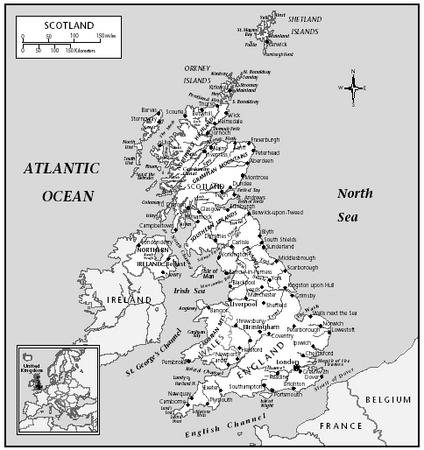
Symbolism. Dominant national symbols evidence a growing demand for political devolution and/or independence. The imagery stemming from the Wars of Independence (1296–1371) produced national heroes such as William Wallace and Robert the Bruce. The images of the Scottish thistle, the lion rampant, and the Saint Andrew's cross (Saltire) on the national flags come from that period. Symbols that evoke the past of the Highlands include the system of clan tartans and bagpipes. Those images were incorporated into Scotland's modern martial traditions through the Highland regiments in the British Army. A third strain emphasizes Lowland Protestant political history since the Reformation, revolving around the national Presbyterian Church (the "Kirk"). Images of the national covenants from the seventeenth century protesting against interference in Scottish religious affairs are often invoked. The fortunes of the national soccer teams and the dramatic landscape are heavily invested with national meaning.
History and Ethnic Relations
Emergence of the Nation. In the eleventh century, the Scottish kingdom was a politico-ethnic patchwork of Scots, Picts, Angles, and Britons. Under Anglo-Norman feudal institutions, many cities were founded, often populated by Flemish, Norman, English, and Scandinavian immigrants recruited for craft and artisanal skills. These changes mark the growing cultural divergence between the Lowlands and the Highlands.
Between the late thirteenth and fifteenth centuries, the political system became unstable and fragmented when the royal line died without a clear heir and rulership was contested, leading to the "Wars of Independence," during which the kings of England and rival Scottish noble houses competed for overlordship. The church went into a long decline, and urban growth set the stage for the Scottish Reformation (1560–67) and the establishment the Calvinist Kirk. Sustained in part by a new class alliance of lesser nobility (lairds), burghers, lawyers, and the ministers of the new Kirk, the authority of the Kirk spread rapidly throughout the Lowlands.
The links between Scotland and England were reinforced by dynastic strategy when King James VI of Scotland acquired the English throne as James I. The next century saw internecine religious war and a shift in power from the monarch and court to the parliaments. In 1707, the Scottish aristocracy agreed to a Union of the Scottish and English parliaments, securing Scotland's part in the coming British Empire. A crucial aspect of this treaty was the preservation of the autonomy of Scotland's Kirk, legal and educational systems, and organs of local government.
In its pre-Reformation conflicts with England, Scotland often sought an alliance with France. After 1707, aristocratic clan chiefs called Jacobites, with French assistance, attempted to reinstate the deposed Stuart royal line. The result of the defeat at the Battle of Culloden (1746) was the harsh oppression of Gaelic culture, including the outlawing of kilts, bagpipes, and the bearing of arms. The Highlands were treated by British and Scottish Lowland authorities as a culturally backward internal colony.
National Identity. Major processes shaping the national identity since 1707 have been Calvinist Protestantism, participation in the British Empire, a mixture of pride and shame involving the cultural and demographic decimation of the Highlands, the sense of a national working class, a weakening sense of attachment to the British Empire and Commonwealth, and an increasing orientation toward a larger European framework.
Ethnic Relations. Cultural tensions still exist between Catholics and Protestants and Highlanders and Lowlanders. However, the Labor Party has been a major force in integrating the Protestant and Catholic communities. There are ethnic tensions between the Scots and English in some areas over access to jobs and housing, and non-white Scots often encounter racism.
Urbanism, Architecture, and the Use of Space
Coastal fishing villages are oriented around a bay or inlet, and farm towns usually have a central "high street." Larger market towns are more free form and often contain the ruins of a castle or abbey. Such towns generally have an old central core of small stone residences and shops.
After World War II, many "New Towns" were established as a response to urban decay in the Central Belt and a way to attract new "lighter" industries. Generally inland, they often have a central business district and recreational spaces surrounded by low-lying, semi-detached suburban housing estates.
Suburban sprawl surrounds the two major northern cities of Inverness and Aberdeen. Glasgow is oriented around the Firth of Clyde, the focus of the declining shipbuilding industry. Its architecture reflects the investments of shipping and tobacco magnates. In the 1980s and 1990s the decaying town center was redeveloped. The architecture of Edinburgh retains the central core of the medieval city. The Georgian New Town, planned and built on a rectilinear design from the late eighteenth century, became a residential alternative for the new upper and middle classes.
Interspersed within and outlying these major cities are turn-of-the-century tenements, new suburbs, and newer but decaying housing estates where unemployment often runs around 50
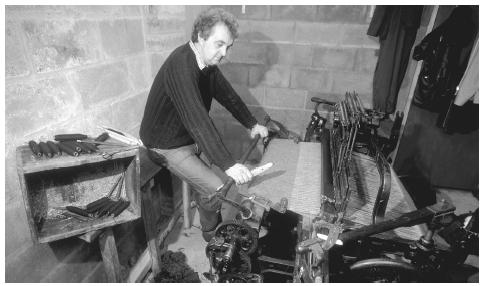
Food and Economy
Food in Daily Life. The diet features prepared foods and an expanded choice of fruits and vegetables. Meals such as mince and tatties (ground beef and boiled or mashed potatoes) and homemade curries are common, along with take-out options. Scots are heavy consumers of sugar, chocolate, salt, and butter, but recently they have begun eating less meat and more fish, whole-meal bread, and vegetables.
Food Customs at Ceremonial Occasions.
Whiskey often serves as a symbolic marker of special occasions. Christmas dinners tend to feature turkey, and haggis provides the centerpiece of the Burns Supper. There is also a strong baking tradition exemplified in tea room fare of fudges and scones.
Basic Economy. By 1900 the textile industry was eclipsed by heavy industries such as coal, iron, steel, engineering, and shipbuilding. Despite state support, the heavier industries have been in decline, increasingly being replaced by electronics and chemicals. Whiskey-making is a stable industry. Manufacturing's share of employment and gross domestic product (GDP) has declined, primarily replaced by the growth of services and the banking and financial sector. Tourism has stimulated the growth of the service sector. Agriculture makes only a modest contribution to employment and GDP. North Sea oil discovered in the early 1970s boosted the economy, but the development of cheaper sources elsewhere has halved production rates. There are chronically high unemployment rates. Manufacturing's share of employment and gross domestic product (GDP) has declined, primarily replaced by the growth of services in public administration and the banking and financial sector.
Land Tenure and Property. Formally, land ownership is still organized in a system of publicly registered feudal conveyances. Until the Succession Act (1964), male primogeniture governed land inheritance. In the 1970s, a process of phasing out feudal tenure and creating legal provision for direct title holding was begun, but there is pressure for the acceleration of land reform. Land ownership can be highly secretive and often is concentrated in a few absentee landlords. Recent moves by some local Highland and Island communities to "buy out" their owners and establish collective ownership have elicited widespread popular support. Historically, land issues have been particularly contentious in the Highlands.
Social Stratification
Classes and Castes. Scotland has a high proportion of the UK's hereditary nobility. By the turn of the century, the landed gentry and the industrial bourgeoisie were developing complex patterns of intermarriage and corporate ownership. The current class structure reflects deindustrialization. The transformation of the classic industrial working class into a more varied series of manual and non-manual occupational segments has made the distinction between working class and middle class difficult. Severe poverty is concentrated in public housing estates in the major urban areas.
The Catholic community is largely Labour-voting and urban working class. The rural and urban working and middle classes are associated more with Presbyterian Protestantism, and the aristocracy has a historical association with the Episcopal Church.
Symbols of Social Stratification. Speech is a key marker of class. Several rural and urban working-class varieties of Scots coexist with rural and urban middle class varieties. Linguistic convergence with received pronunciation English is viewed as a sign of education and middle to upper class status.
There is a strong tendency for Scots to identify as working class despite occupations and levels of education that indicate a middle class status. Scotland has a social democratically inclined middle class with a strong sense of its roots in the industrial working class and the formation of the welfare state; there is a widespread belief that egalitarianism is inherent in the national culture.
Political Life
Government. Scotland is a nation within the multinational UK state, administratively distinct, with its own legislature. Since 1885, it has been administered through the Scottish Office, led by the secretary of state for Scotland, who is appointed by the UK Parliament. Beneath the Scottish Office are thirty-two local authorities that administer basic services, and a separate system of laws and courts. The Scotland Act of 1998 established the first
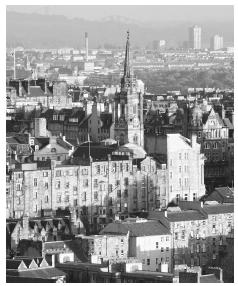
Leadership and Political Officials. The thirty-two local authorities are coordinated through the Convention of Scottish Local Authorities (COSLA), which has been increasingly Labour-dominated and includes large urban authorities with a "party machine" style of local politics. The Conservative Party is stronger in rural agricultural regions. The Scottish National Party (SNP) has rural and urban support but has had more success in rural areas. Because of its size and dominance, the Labour Party is more bureacratized than are the SNP, the Conservatives, and the Liberal Democrats. The SNP, limited to Scotland, has been more informal and less professionalized.
Despite internal dissent, Labour has supported Scottish devolution since the 1980s. The SNP is a left-of-center social democratic party to the left of Labour. It supports full national independence for Scotland as a member of the European Union. The Conservatives lost control of all UK parliamentary seats in Scotland in 1997. Many Scottish Conservatives support moderate devolution and rejected the party's traditional resistance to constitutional change. The Liberal Democrats have maintained a commitment to federalism in Britain for over a hundred years. They tend to be liberal on both social and economic issues, though they favor more state intervention than do the Conservatives. Although small, the Scottish Socialist Party and the Greens managed to get one representative each elected to the parliament.
Social Problems and Control. The legal system combines civilian and common law traditions. Law is based on judge-made precedents, authoritative legal texts, and legislation. Judgments are made by a judge or a simple majority of a fifteen-member jury, depending on the magnitude of the crime. There are three possible verdicts: guilty, not guilty, and "not proven," meaning the jury suspects guilt, but the evidence is not sufficient to warrant a guilty verdict. The courts are divided into civil and criminal systems, with overlapping judges. The highest civil court of appeal is the UK House of Lords, and for criminal cases it is the High Court of Criminal Appeal, which is Scottish. There are specialized tribunals presided over by laypersons and specialists to adjudicate minor juvenile offenses and industrial disputes. The former, called Children's Hearings, are primarily welfare-based rather than punitive. There is system of legal aid combined with various bodies that offer legal advice.
Drugs, especially heroin, and drug-related crime are a problem in larger cities. Police report an increasing frequency of fraud, auto theft, and violent crimes involving guns. Drunk driving has been reduced, and the use of a designated driver has become a common practice. There has been an effort to raise awareness of domestic violence against women.
Military Activity. Militarism has been an important stimulus for industry. Scotland was called "a landlocked aircraft carrier" because of its role as part of NATO's forward defense strategy during the Cold War. The nuclear presence has been reduced by popular anti-nuclear, anti-war pressures and a new NATO strategy oriented toward smaller-scale, non-nuclear capabilities. In the early 1990s around twenty-two thousand servicepersons were based in Scotland. However, restructuring of the military and related industries is leading to reductions in military jobs.
Social Welfare and Change Programs
Beyond the government, Scottish life is managed through a network of Scottish- and UK-based Non-Departmental Public Bodies (NDPBs, sometimes called "quangos") whose members are appointed and are responsible for various aspects of public spending and administration. Those concerned solely with Scotland are now accountable to the Executive of the new Parliament, while most cross-border public bodies are accountable to both the Scottish and UK parliaments. Most have executive or advisory functions, often linked to the National Health Service. Those responsible for local spending are concerned with education, local enterprise, and housing.
Nongovernmental Organizations and Other Associations
In the civil society, important players include the major churches (Church of Scotland, Catholic, and Episcopal), which often coordinate their efforts through ACTS (Action Together by Churches in Scotland), the Scottish Trades Union Congress (STUC), the Confederation of British Industry (Scottish branch), the Scottish Federation of Small Businesses, the Educational Institute of Scotland, the Scottish Council of Voluntary Organizations, other professional associations, interest groups, and around forty thousand smaller bodies concerned with the general public benefit. The political parties and COSLA mediate between civil society and the government. In conjunction with the political parties and campaigning groups, this network (with the general exception of business-oriented bodies) was crucial in achieving constitutional change in the late 1990s.
Gender Roles and Statuses
Division of Labor by Gender. Women are beginning to outstrip men as a percentage of total employees. Scottish machismo, bolstered by laborism, Calvinism, militarism, and soccer is adjusting to a
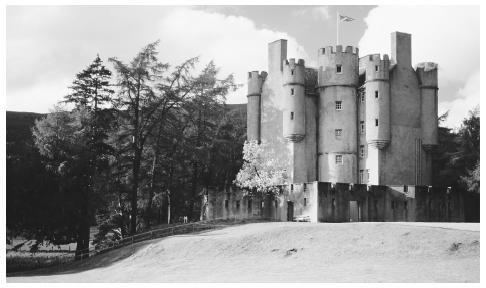
The Relative Status of Women and Men. Men and women are notionally equal, but there is still room for reform. The feminist movement has opposed sex discrimination, fought to ensure greater participation by women in the new parliament, and had some success heightening awareness about violence against women. Still, many young men and women consider it acceptable to hit a woman or force her to have sex in certain circumstances. Women, especially as single parents and pensioners, are more vulnerable to poverty than men are, and the vast majority of single parents with dependent children are women.
Marriage, Family, and Kinship
Marriage. Over a third of marriages are civil rather than religious. Scots law requires that marriages be monogamous and be between consenting adults (over age 16) and provides for the recognition of marriage "by habit and repute."
Traditional weddings take place on Friday or Saturday, with the groom in formal attire (often kilted) and the bride usually in white, forbidden to see the groom until the ceremony. Weddings normally are conducted near the bride's home. The bride enters last and is "given away" by her father or a senior male relative. Divorce can be obtained on the bases of adultery, intolerable behavior, desertion, and de facto separation.
Domestic Unit. An increasing number of households (around 30 percent) contain a single adult, while those with one male and one female with children (around 20 percent) have been decreasing. Around a quarter include one male, one female, and no children, and just over 10 percent include three or more adults with no children. At least a third of households are headed by women, a fifth of those widowed or divorced, whereas two thirds of households are headed by men, over half of which are married.
Inheritance. Until the 1960s, the incomes, savings, and properties of both spouses were considered totally separate, with marriage conferring no claims. Parliamentary acts in 1964 and 1985 established equal claims at divorce on most property acquired during marriage, and household goods and savings from housekeeping allowances are equally shared. A peculiarity of Scots law is that minors can enter into binding contracts.
Kin Groups. The clan system today has significance primarily for historians and tourists. Ties of kinship are activated by conditions of class and economic opportunity, with poverty, family businesses, and extreme wealth tending to heighten the importance of kin group obligations. Scotland is a small country with a high degree of overlap in social and kinship networks. Thus, urban networks involving politics and public life can be very dense, creating a sense of familiarity across a wide social field.
Socialization
Child Rearing and Education. Child rearing is primarily women's work, sometimes aided by play groups. Mass literacy and education developed early, creating a popular conception of Scots as deeply commited to education, self improvement, and access to education. However, this tradition also produced the stern authoritarian "dominie" (parish teacher) teaching a narrow curriculum backed by corporal punishment. In recent decades, more child-centered teaching methods and diverse curricula built around national standards have developed. Scottish education is distinctive in its integration of denominational schools (almost all Catholic) into the broader system of public funding and management.
Higher Education. There are four ancient universities, four established in the twentieth century, fifty-four technical and vocational colleges of further education, and 16,233 adult community education groups. The university course lasts four years, not three as in most English universities. Scottish students used to make the transition from secondary to higher education at age 17; now most take an extra year to prepare for university.
Etiquette
Rules of etiquette are situational, affected by status, class, and familiarity. An initial reserve toward strangers is likely to be heightened if one party is of higher status. However, friendliness and verbal politeness are expected in everyday life. Light, humorous banter, often about soccer, facilitates such interactions. The notion that Scots are more friendly and open than the English is common. Similarly, many believe that people are more friendly in Glasgow than in Edinburgh. Two somewhat ritualized markers of politeness are the offering of tea, coffee, and sweets to house visitors and taking turns buying rounds of drinks at a pub.
Religion
Religious Beliefs. The Church of Scotland has around 770,217 members, and around 774,550 people are members of the Catholic Church. The Episcopalians have around thirty-five thousand communicants, with a similar number distributed among smaller Protestant denominations, including many strict Sabbatarians in the Highlands, Islands, and fishing ports of the northeast coast. There are around fifteen thousand to twenty thousand Muslims; a handful of Hindus, Sikhs, and Buddhist; and four Jewish congregations.
Although mainstream church attendance is in decline, Scotland bears the impress of its Protestant history. Today's adherents range from scriptural fundamentalists to liberals who view the Bible interpretively. In addition to the Protestant distaste for symbolic elaboration and emphasis on the individual's personal relationship to God, a strong sense of guilt and righteousness pervades Presbyterian discourses. Traditional supernatural beliefs (ghosts, fairies, etc.) endure as literary themes and in revived forms in Celticist New Age beliefs. Belief in the gift of second sight persists among some Highlanders.
Religious Practitioners. Leading members of the Presbyterian, Catholic, and Episcopal churches regularly make public pronouncements in the media regarding social issues and government policies. In recent years, this has involved the critical rejection of some aspects of neoliberalism and support for devolution.
Rituals and Holy Places. Easter and Christmas are the major ceremonial occasions. Medieval sites of pilgrimage are visited primarily by tourists and antiquarians. The Scottish landscape, with ancient religious structures from stone circles to ruined abbeys, often is said to have a sacred quality. The Isle
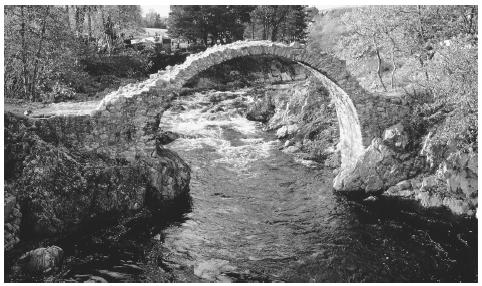
Death and the Afterlife. Funerary practices normally involve a simple ceremony of blessings and remembrance by family members and friends in a chapel or funeral parlor, leading to interment or cremation. Until recently, women did not go to the gravesite, and in some parts of the western Highlands and Islands the postburial mean can still become an extended alcoholic ritual. Catholic ceremonies may be preceded by a traditional wake.
Medicine and Health Care
The National Health Service (NHS) was anticipated by the Highlands and Islands Medical Scheme, which subsidizes medical practices in the poor and sparsely populated Highlands. The NHS made general health care more available and, continues to enjoy strong popular support. Despite its strong medical tradition, Scotland has a long history of high morbidity and mortality as a result of the climate, the diet, and poverty-related diseases such as tuberculosis. High consumption of tobacco, alcohol, and fatty foods, along with a lack of exercise and an increasing incidence of cancer is creating a new profile of ill health.
Secular Celebrations
Christmas was hardly observed in the Lowlands after the Reformation but is broadly observed as a relatively secularized holiday. New Year's Eve, called Hogmanay, has long been the main midwinter celebration. Fairlike events and public gatherings for the changing of the year are promoted by major cities. Customarily, some entertained guests at home, while others went "firstfooting." First-footers carry a bottle of whiskey and perhaps some food and, if traditional, a lump of coal or something black.
Celtic seasonal rituals fused to medieval saints' days survive in modern secularized celebrations. Traditionally, Halloween (31 October) involved children "guising," or dressing up in costumes and entertaining for treats, engaging in mischief, and young girls performing divination to find out about their future spouses. The May Day celebration of Beltane, involving bonfires on hilltops, has seen a revival. Many towns have fairs and gala weeks, especially during the summer. Annual Highland Gatherings serve a similar civic function, as do the Common Ridings in the Borders towns, in which a
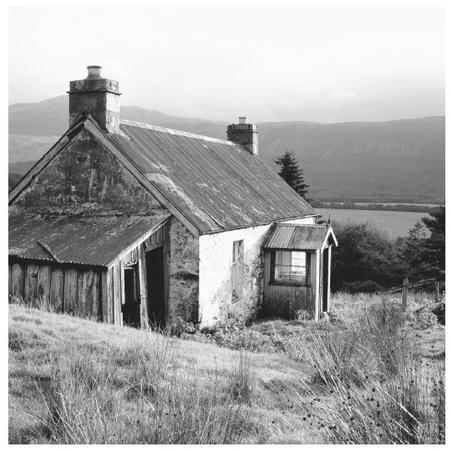
Saint Andrew's Day (30 November), named after the national patron saint, is not marked ritually, but events of national significance are often timed to fall on that day. Perhaps the most symbol-laden holiday is Burns Day (25 January), named after the "national" poet, Robert Burns. Set around a ritual "peasant" meal of haggis (a mixture of oats, offal, and seasonings boiled inside the lining of a sheep's stomach), neeps (turnips), and tatties (potatoes), accompanied by whiskey, the event involves an elaborate series of speeches and set readings from Burns's opus. This ceremony plays upon Burns's bawdy celebration of the common people and penchant for deflating the self-righteous and highborn. Traditionally very male-dominated and chauvanistic affairs, gender participation is now more equal, and even feminist readings of Burns's radicalism can be found.
The Arts and Humanities
Support for the Arts. The Scottish Arts Council is advised by specialist committees about funding for theaters, art galleries, musical and literary organizations, art centers, and major festivals. Almost half the budget goes to support the four national companies: Scottish Opera, Scottish Ballet, Royal National Orchestra, and Scottish Chamber Orchestra. Local authorities and economic development agencies have become major contributors. In the popular arts, self-financing and ticket charges are important.
Literature. Passion for the spoken word has arisen from linguistic diversity and the tradition of public oration and dispute on scriptural subjects. The ability to tell a good story or joke is prized. There are rich poetry and prose traditions in Gaelic, Scots, and Scots-inflected English. Gaelic literature derives from bardic verses celebrating heroes and political leaders. The development of Gaelic communities in the major cities, particularly Glasgow, around 1870–1914 stimulated new linguistic and literary awareness.
Scottish literature oscillates between romantic flourishes and mordant commentary, often suggesting a preoccupation with dialectical tensions: reason-passion, reality-fantasy, natural-supernatural, solemnity-satire. There was a notable revival after the World War I, spearheaded by the poet Hugh MacDiarmid. Many twentieth century prose writers wrote about Scottish locales and themes. Recent works such as Alasdair Gray's Lanark and Irvine Welsh's Trainspotting combine gritty reality and wild imagination with Scots language and caustic visions of a deindustrializing world.
Graphic Arts. Scottish painting has struggled to establish a distinctive identity. Scottishness has been a question of subject matter more than style. Since 1900, French impressionism and post-1960s conceptual approaches have been influential. The absence of a major Scottish-based art market has tended to keep the fine arts semiprofessional.
Stylized animals and objects in bas relief on Pictish symbol stones mixed with the curvilinear designs of Celtic Christianity in the first millennium C.E. French and Flemish influences appear in medieval church sculpture. In the nineteenth century, neoclassical styles dominated. Only with the rise of modernism has the long connection between architecture and ornamental sculpture been broken, allowing freer, more experimental modes to develop.
At a more popular and functional level, jewelry and textiles sustain artistic traditions that often allude to Pictish and Celtic design themes. Major art colleges provide support, particularly in the area of textiles.
Performance Arts. The national ballet, opera, and orchestras and the Edinburgh festival ensure that a high art tradition is maintained. Traditional music and dance have had a revival, sustained by dedicated groups and associations, major nationwide competitive events, and a tradition of informal music-making in pubs, along with the new popularity of the Ceilidh, a public event of traditional set dances to fiddle tunes. There is an active folk scene, and a strong popular music scene. Since the 1970s there has been a flourishing of new theaters and companies performing new works in Scots and translations of plays into that language.
The State of the Physical and Social Sciences
Scotland was in the forefront of the development of the physical and social sciences, including ground-breaking work in the eighteenth century in mathematics by Colin MacLaurin, geology by James Hutton, and in chemistry by Joseph Black, sociological data gathering in the Statistical Account (1790s), and the moral philosophy and political economy of David Hume, Adam Smith, John Millar, and Adam Ferguson.
During the heyday of industrialization, Scotland became preeminant in the field of engineering, and the social sciences were eclipsed by the physical sciences, exemplified by the physicists Lord Kelvin (William Thomson) and James Clark Maxwell. The sciences atrophied during the post-World War I industrial decline. Since the 1960s, there has been a push to strengthen the role of physical sciences in higher education. Technology transfer between industry and university has been a core goal, supported by the establishment of university-associated research institutes. Offshore engineering, aquaculture, veterinary medicine, and computers are key research areas along with medicine. Scotland has been a leader in cloning research, and the school of linguistics at Edinburgh has stimulated work on the interface of speech and computers.
Whereas corporate funding has provided major support for the physical sciences, the social sciences have had to compete for funds from the Economic and Social Research Council and smaller sources. Political change has stimulated revivals in history and legal studies and reestablished Scotland as a topic for political and sociological study.
Bibliography
Berry, Christopher J. Social Theory of the Scottish Enlightenment 1997.
Brown, Alice, David McCrone, and Lindsay Paterson. Politics and Society in Scotland , 2nd ed., 1998.
——, and Paula Surridge. The Scottish Electorate: The 1997 General Election and Beyond , 1999.
Cohen, Anthony P. Whalsay. Symbol, Segment and Boundary in a Shetland Island Community , 1987.
Daiches, David, ed. The New Companion to Scottish Culture , 1993.
Harvie, Christopher. No Gods and Precious Few Heroes: Scotland since 1914, 3rd ed., 1998.
Hassan, Gerry, ed. A Guide to the Scottish Parliament: The Shape of Things to Come , 1999.
Hunter, James. The Making of the Crofting Community , 1976.
Kay, Billy. Scots: The Mither Tongue , 1986.
Kellas, James. The Scottish Political System , 4th ed., 1989.
Linklater, Magnus, and Robin Denniston, eds. The Anatomy of Scotland: How Scotland Works , 1992.
Maan, Bashir. The New Scots: The Story of Asians in Scotland , 1992.
MacKay, Fiona, Chrisma Bould, and Georgie Young, eds. Gender Audit 1998–99: Putting Scottish Women in the Picture , 1999.
McCrone, David. Understanding Scotland: The Sociology of a Stateless Nation , 1992.
Nadel, Jane. "Stigma and Separation: Pariah Status and Community Persistence in a Scottish Fishing Village." Ethnology 23 (2): 101–115, 1984.
Nairn, Tom. The Break-Up of Britain , 1977.
Neville, Gwen Kennedy. "Community Form and Ceremonial Life in Three Regions of Scotland." American Ethnologist 6 (1): 93–109, 1979.
Parman, Susan. Scottish Crofters: A Historical Ethnography of a Celtic Village , 1990.
Paterson, Lindsay. The Autonomy of Modern Scotland , 1994.
——, ed. A Diverse Assembly: The Debate on a Scottish Parliament , 1998.
Smout, T. C. A History of the Scottish People , 1560–1830, 1972.
——. A Century of the Scottish People , 1830–1950, 1987.
Withers, Charles W. J. Gaelic Scotland: The Transformation of a Culture Region , 1988.
Woman's Claim of Right Group. A Woman's Claim of Right in Scotland: Women, Representation, and Politics , 1991.
—J ONATHAN H EARN
S EE A LSO : United Kingdom
Great.
I just wondered if anyone has ever heard of an old Scottish tradition that says that either the eldest boy or the youngest boy inherits everything from their parents, that nothing is left to any of the other children male or female. Thanks
Thank you to the creators of this site! I can't thank you enough for your contribution to help people learn about cultures!
~Cass
The phonetic spelling, as far as I can recall, is 'mon-noj'. As for the context - my dad told me of how working class families living in the old tenements of Glasgow would organize themselves into groups. Each family would contribute an equal amount of money into a common 'kitty'. The total amount collected by a 'banker' would then be given to each of the participating families on a weekly, rotating basis. I'm not sure if the word refers to the group of people or to the kitty.
It has also been included in an insult, "Stupid (bleep) couldn't run a bloody mon-noj" used when commenting on someones inability to successfully complete a simple task.
I would appreciate any help that you can offer. Many thanks. William Warren
thank you
A menage its called , it is a scheme whereby everyone pays in an amount every week or month and takes turns at getting the whole amount - eg, 12 colleagues pay £50 a month, and each month one person gets £600.